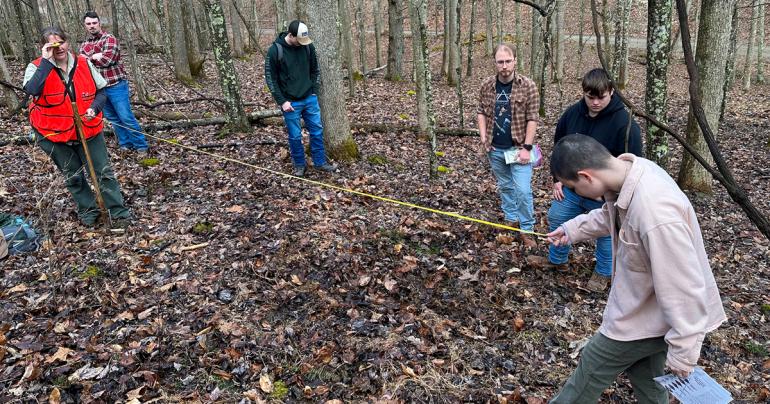
FOR IMMEDIATE RELEASE: March 10, 2023
For More Information:
Glenville State University
Public Relations & Marketing
(304) 462-4115
GLENVILLE, WV – Glenville State University natural resource management students in the Forest Measurements II (FRST 193) course recently met with Forester Karen Kubly of U.S. Forest Service. Kubly demonstrated protocols in sampling and plot design used by the Northern Forest Inventory and Analysis (FIA) Program.
According to the U.S. Department of Agriculture, the FIA program provides information needed to assess America’s forests. The long history of scientifically credible FIA data provides critical status and trend information to resource managers, policymakers, investors, and the public through a system of annual resource inventory that covers both public and private forest lands across the United States.

Forester Kubly explained to the group the process in locating the inventory plot, contacting landowner to request access to the property, collecting forest data, and processing data for analysis. A plot covers about one acre and consists of four subplots. Each plot is visited every 5-10 years. There are approximately 450 plots located in West Virginia’s public and private forests.
Both quantitative and qualitative measurements are collected in each permanent plot that describe general land use, changes in land use and forest stand characteristics, tree species, diameter, height, amount of rotten or missing wood and tree quality, counts of tree regeneration, estimates of growth, and mortality. Other detailed measurements taken on each plot include tree crown conditions, soil chemical analysis, invasive plants inventory, vegetation diversity and structure, and down woody material. These forest data are used primarily to assess wildlife habitat suitability, carbon sequestration, old-growth forest, timber availability, forest fragmentation, fire hazard, and forest insect and disease impact.
The Forest Measurements class is taught by Professor of Forestry Dr. Rico Gazal. The class was accompanied by Department of Land Resources Academic Laboratory Instructional Assistant Tom Snyder and met on forestland owned by Glenville State University.

